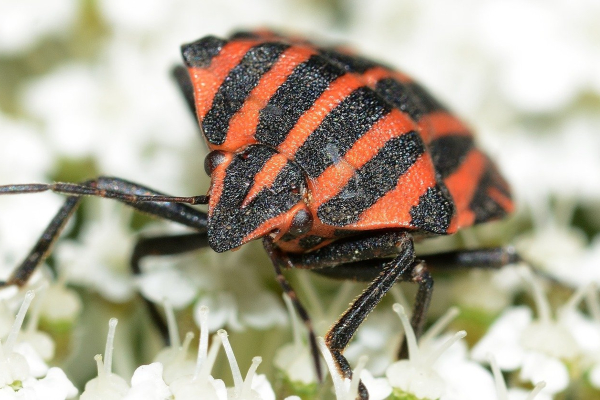Bed bugs have become a common household pest in recent years, and their presence can cause a lot of discomfort and frustration. These small, oval-shaped insects feed on the blood of humans and animals, typically at night while we are sleeping. Their bites can result in itchy red bumps and can also lead to allergic reactions in some people.Introduction to Bed Bugs
While bed bugs can be found in various places throughout your home, they are most commonly found on mattresses. This is because mattresses provide the perfect hiding spot for these pests - they are dark, warm, and close to their food source (us!). However, bed bugs can also be found in other areas such as bed frames, box springs, and headboards.The Main Location of Bed Bugs
It is important to know how to identify bed bugs on your mattress in order to effectively get rid of them. Adult bed bugs are small, about the size of an apple seed, and are reddish-brown in color. They are flat and oval-shaped, but after feeding, they become more elongated and dark in color. You may also notice tiny black spots on your mattress, which are bed bug droppings.Identifying Bed Bugs on Mattresses
If you suspect that you have bed bugs on your mattress, there are some signs to look out for. Aside from the physical presence of the bugs themselves, you may notice small red or rust-colored stains on your sheets or mattress. These are the result of bed bugs being crushed while feeding. You may also find shed bed bug skins, eggs, or dead bugs on your mattress or in the surrounding area.Signs of a Bed Bug Infestation
Dealing with a bed bug infestation can be a daunting task, but it is not impossible. The first step is to isolate your mattress by placing it in a bed bug-proof encasement. This will prevent the bugs from escaping and also make it easier to spot them. You can also try vacuuming your mattress to remove any bugs or eggs. It is important to empty the vacuum immediately after to prevent re-infestation.Getting Rid of Bed Bugs on Your Mattress
While there are many chemical pesticides available for getting rid of bed bugs, some people prefer to use natural remedies. These can include using essential oils such as lavender, peppermint, or tea tree oil. These oils have strong scents that are known to repel bed bugs. You can mix a few drops with water and spray it on your mattress or infested areas. Diatomaceous earth, a natural powder made from fossilized algae, can also be effective in killing bed bugs.Natural Remedies for Bed Bugs on Mattresses
If the infestation is severe, it may be best to seek professional help. Exterminators have access to stronger pesticides and methods of treatment that can eradicate the bed bug population. They may also use heat treatments, which involve raising the temperature in your home to a level that is lethal for bed bugs.Professional Treatment for Bed Bugs
Prevention is always better than cure, and there are some steps you can take to prevent bed bugs from infesting your mattress in the first place. Be cautious when traveling and inspect your hotel room for any signs of bed bugs. When purchasing used furniture, thoroughly check for any signs of infestation. You can also use mattress encasements as a preventative measure.Preventing Bed Bugs on Mattresses
Bed bugs may be small, but they can cause a lot of problems if left untreated. By knowing how to identify them and taking the necessary steps to get rid of them, you can ensure a peaceful and bed bug-free night's sleep on your mattress. Remember to always be vigilant and take preventative measures to avoid future infestations.In Conclusion
Where Else Can Bed Bugs Be Found in the House?

While mattresses are the most common and obvious place to find bed bugs, these pesky insects can also be found in other areas of the house.

Bed bugs are not limited to just mattresses, they are also known to hide in furniture, curtains, and even walls or electrical outlets. This is because they are attracted to dark, warm, and secluded areas where they can easily hide and thrive.
Furniture such as couches and chairs are also popular hiding spots for bed bugs. These pieces of furniture provide plenty of nooks and crannies for the insects to hide in, making it difficult to spot them. It is important to regularly check and clean these items to prevent an infestation.
Curtains can also be a hiding spot for bed bugs. They are often hung near windows, which can be an entry point for bed bugs to enter the house. Additionally, curtains provide a dark and secluded environment for the insects to hide in. Regularly washing and vacuuming curtains can help prevent bed bugs from making a home in them.
Believe it or not, bed bugs can also be found in electrical outlets and wall voids. These spaces provide a warm and sheltered environment for bed bugs to lay their eggs and hide from detection. Regularly checking and sealing any cracks or crevices in walls and electrical outlets can help prevent bed bugs from invading these areas.
In conclusion, while mattresses are the most common place to find bed bugs, it is important to be aware that they can also be found in other areas of the house. Being vigilant and regularly cleaning and checking these areas can help prevent a bed bug infestation and keep your home free of these unwanted guests.
































/AMI089-4600040ba9154b9ab835de0c79d1343a.jpg)

